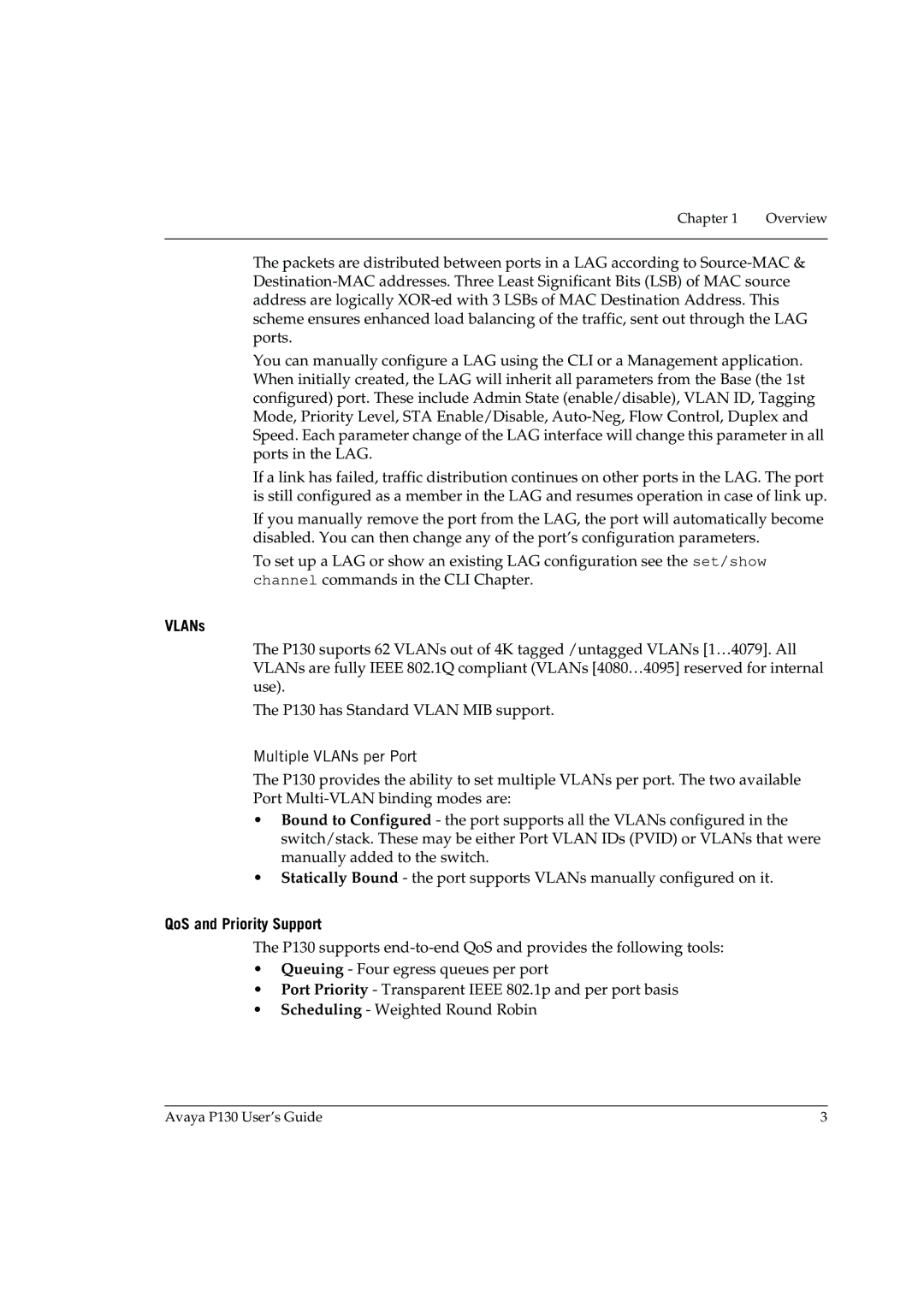Chapter 1 | Overview |
|
|
The packets are distributed between ports in a LAG according to
You can manually configure a LAG using the CLI or a Management application. When initially created, the LAG will inherit all parameters from the Base (the 1st configured) port. These include Admin State (enable/disable), VLAN ID, Tagging Mode, Priority Level, STA Enable/Disable,
If a link has failed, traffic distribution continues on other ports in the LAG. The port is still configured as a member in the LAG and resumes operation in case of link up.
If you manually remove the port from the LAG, the port will automatically become disabled. You can then change any of the port’s configuration parameters.
To set up a LAG or show an existing LAG configuration see the set/show channel commands in the CLI Chapter.
VLANs
The P130 suports 62 VLANs out of 4K tagged /untagged VLANs [1…4079]. All VLANs are fully IEEE 802.1Q compliant (VLANs [4080…4095] reserved for internal use).
The P130 has Standard VLAN MIB support.
Multiple VLANs per Port
The P130 provides the ability to set multiple VLANs per port. The two available Port
•Bound to Configured - the port supports all the VLANs configured in the switch/stack. These may be either Port VLAN IDs (PVID) or VLANs that were manually added to the switch.
•Statically Bound - the port supports VLANs manually configured on it.
QoS and Priority Support
The P130 supports
•Queuing - Four egress queues per port
•Port Priority - Transparent IEEE 802.1p and per port basis
•Scheduling - Weighted Round Robin
Avaya P130 User’s Guide | 3 |
